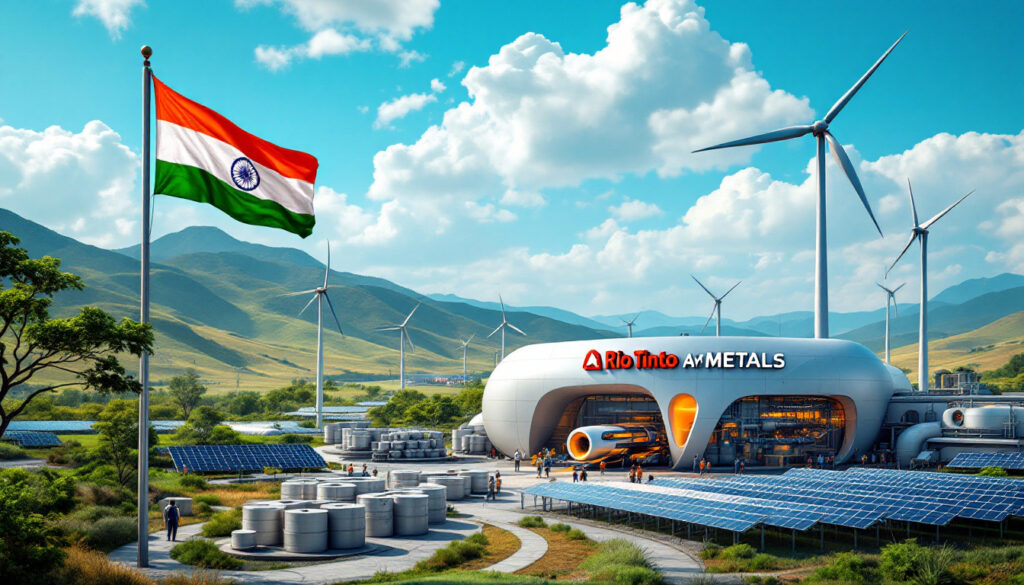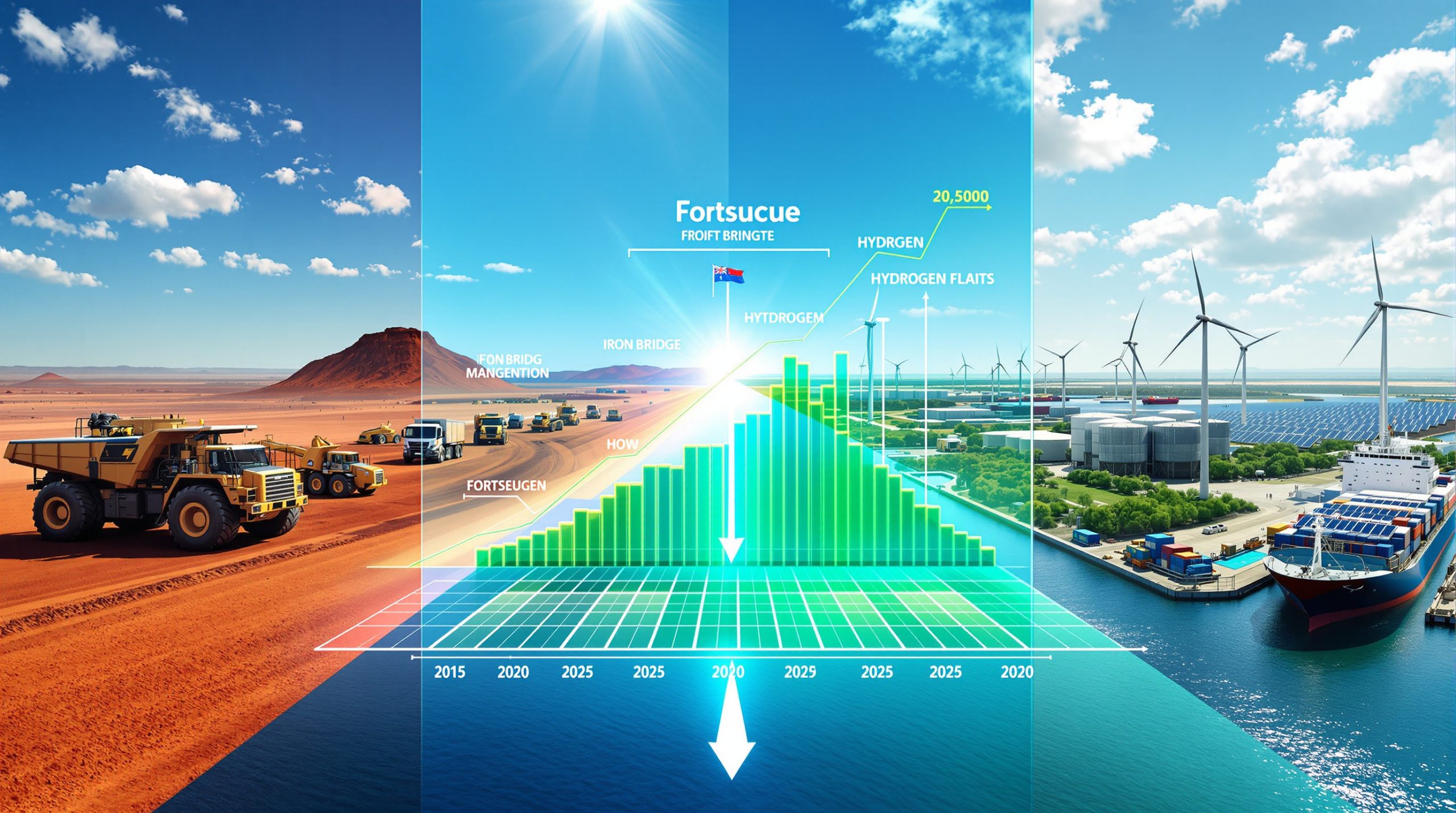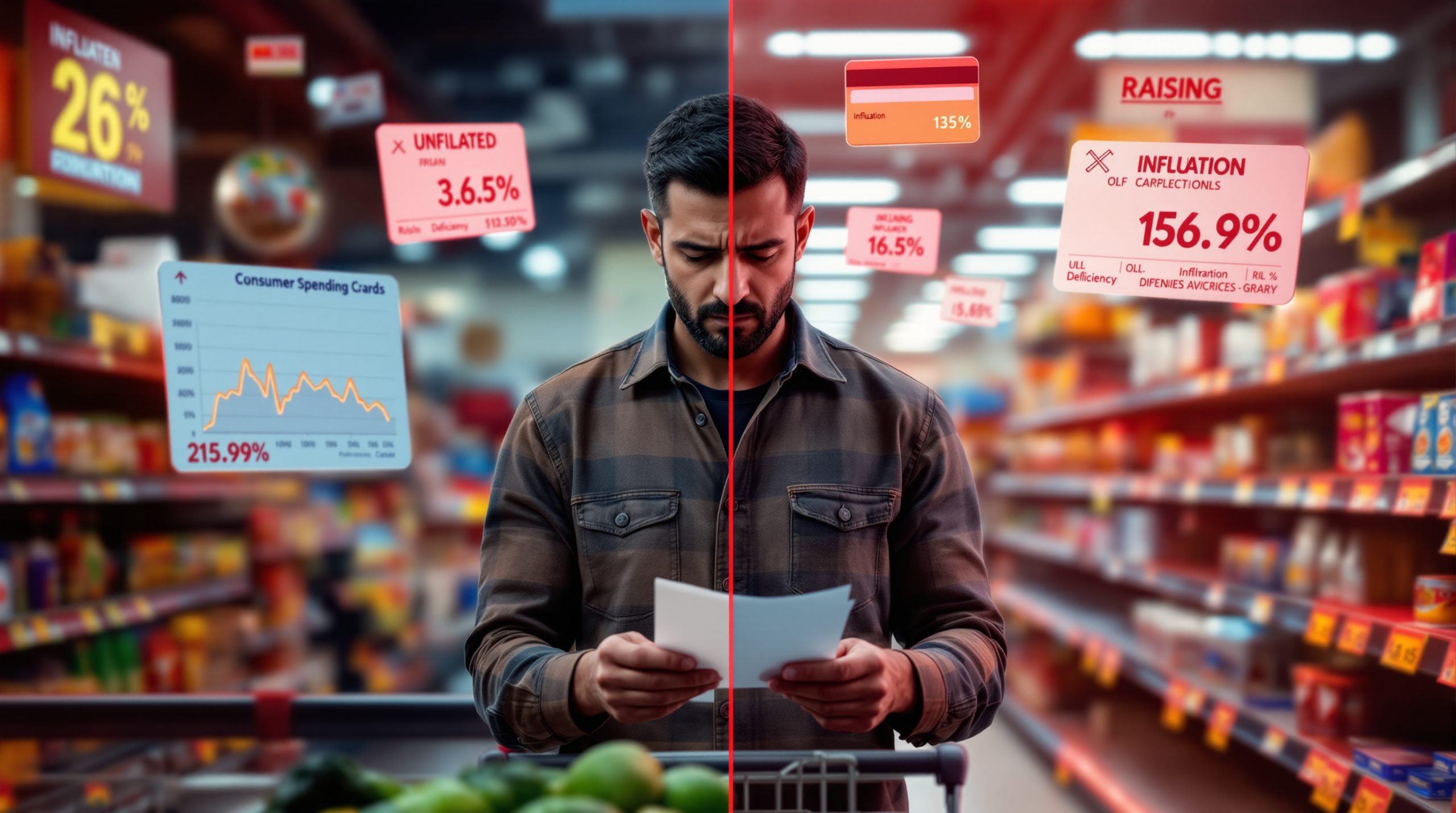What is the Rio Tinto-AMG Metals & Materials MoU About?
In a significant development for the global aluminium industry, Rio Tinto has signed a memorandum of understanding (MoU) with AMG Metals & Materials, an India-based energy transition solutions provider. The partnership aims to develop an integrated low-carbon aluminium project in India, marking Rio Tinto's strategic entry into one of the world's fastest-growing economies.
The core focus of this collaboration is to establish a sustainable aluminium production facility powered entirely by renewable energy sources—specifically wind and solar power. This ambitious project represents a major shift in how aluminium, traditionally an energy-intensive metal to produce, can be manufactured with a significantly reduced carbon footprint.
"Partnering with AMG enables us to assess low-cost responsible aluminium production powered by renewables," stated Jérôme Pécresse, Rio Tinto Aluminium's Chief Executive. This statement underscores the economic and environmental dual focus of the venture.
Key Elements of the Partnership
The MoU outlines a comprehensive joint feasibility study to assess the viability and implementation approach for this integrated project. Both companies will bring their respective expertise to the table—Rio Tinto with its century-long experience in aluminium production and AMG with its strong foothold in India's renewable energy landscape.
The feasibility study will evaluate various smelting technologies, including advanced options like inert anode technology, which eliminates direct carbon emissions from the smelting process. Additionally, the study will address grid stability solutions necessary for managing the intermittent nature of solar and wind energy sources.
Similar to Rio Tinto's ISAL facility in Iceland, which utilizes geothermal energy, this project aims to demonstrate that renewable-powered aluminium production can be scaled commercially in emerging markets. AMG's existing solar infrastructure in India, with approximately 3GW of capacity, provides a strong foundation for the renewable energy component.
Production Capacity Targets
The partnership has ambitious production goals that would position the facility among the significant aluminium producers globally:
- Potential development of 2 million tonnes per annum (Mtpa) of alumina production capacity
- An aluminium smelter with up to 1 Mtpa capacity in its complete form
- A phased approach beginning with a 500,000-tonne-per-annum primary aluminium smelter
The first phase will focus on establishing the initial 500,000-tonne capacity smelter while assessing various technologies for optimal efficiency and environmental performance. This cautious, phased approach helps manage investment risk while allowing for technology optimization as the project evolves.
Why is This Partnership Strategically Important?
This collaboration holds strategic significance for both companies, as well as for the global aluminium industry's sustainability trajectory. For Rio Tinto, it represents an opportunity to diversify its production base while strengthening its commitment to low-carbon aluminium.
"India's rapid growth and strategic supply chain position make it compelling for aluminium production," noted Pécresse. This insight highlights why India has emerged as Rio Tinto's choice for this landmark project—its first major smelter investment in Asia.
With India's aluminium demand projected to grow at approximately 8% CAGR between 2024 and 2030, the timing of this partnership aligns perfectly with market dynamics. As global industries increasingly demand low-carbon materials, establishing production capabilities in high-growth markets provides strategic advantages.
Rio Tinto's Global Expansion Strategy
This MoU represents a key milestone in Rio Tinto's global aluminium business expansion strategy. The company, which has traditionally concentrated its smelting operations in Canada, Australia, and Iceland, now looks to diversify geographically into emerging markets with high growth potential.
The partnership showcases Rio Tinto's approach to entering complex regulatory environments through strategic local partnerships. By collaborating with AMG, Rio Tinto can navigate India's regulatory frameworks more effectively while leveraging local expertise in renewable energy implementation.
This approach creates a more resilient aluminium business portfolio for Rio Tinto, reducing its dependence on established markets and positioning it to capture growth in regions where aluminium demand is rising most rapidly.
India as a Strategic Location
India's selection for this project wasn't coincidental. Several factors make it an ideal location for this pioneering venture:
- The country's electric grid is rapidly incorporating renewable energy, with ambitious national targets for solar and wind capacity
- Labor and certain operational costs are lower than in Rio Tinto's traditional operating locations
- India's growing manufacturing sector creates strong domestic demand for aluminium
- The country's strategic position enables efficient distribution to both Asian and Middle Eastern markets
The partnership also aligns with India's own industrial policy, which encourages foreign investment in projects that incorporate advanced technology and sustainable practices.
How Does This Support Decarbonization Efforts?
The aluminium industry faces significant decarbonization challenges, as conventional production methods are energy-intensive and often rely on fossil fuels. This project aims to demonstrate that large-scale, low-carbon aluminium production is technically and economically viable.
By combining renewable energy with state-of-the-art smelting technologies, the Rio Tinto-AMG partnership could reduce carbon emissions by approximately 60% compared to coal-powered aluminium production. At full capacity, this could represent annual CO₂ savings of around 5 million tonnes—equivalent to removing over a million cars from the road.
Mahesh Kolli, AMG M&M Group President, emphasized this impact: "Decarbonizing supply chains across industries requires scalable solutions. This MoU could deliver low-carbon metal at scale for automotive, construction, and packaging sectors."
Renewable Energy Integration
The project's renewable energy foundation represents one of its most innovative aspects. Key components include:
- 100% wind and solar power for all operations
- Integration of AMG's pumped hydro projects (1.2GW capacity) to balance intermittent renewable generation
- Advanced energy management systems to maintain consistent power for the energy-intensive smelting process
- Potential for behind-the-meter renewable generation to reduce transmission costs and grid dependencies
This approach draws inspiration from but goes beyond Alcoa's ELYSIS zero-carbon technology being piloted in Canada. While ELYSIS focuses on the smelting process itself, the Rio Tinto-AMG partnership addresses the entire energy ecosystem supporting aluminium production.
Industry Impact and Supply Chain Benefits
Beyond the direct environmental benefits, this project could catalyze broader industry transformation by:
- Establishing new benchmarks for renewable-powered metal production
- Creating market pressure for competitors to adopt similar approaches
- Providing a case study for how heavy industry can integrate variable renewable energy
- Developing technical solutions that could be applied in other metal production processes
For global supply chains, access to low-carbon aluminium enables companies in sectors like automotive, aerospace, construction, and packaging to reduce their Scope 3 emissions significantly. This supports their own decarbonisation in mining targets without compromising material performance or dramatically increasing costs.
Who Are the Key Players in This Partnership?
The success of this ambitious project relies on the complementary expertise and vision of its key stakeholders. Understanding the companies and executives involved provides important context for the partnership's potential.
Rio Tinto's Leadership and Vision
Rio Tinto's aluminium division is led by Jérôme Pécresse, who has served as CEO since 2021. Under his leadership, the company has increasingly focused on developing low-carbon production methods and expanding into strategic growth markets.
Rio Tinto brings several critical strengths to the partnership:
- Over 100 years of experience in aluminium production
- Technical expertise in smelter design, operation, and optimization
- Global marketing networks and established customer relationships
- Experience in implementing sustainability initiatives across its operations
This project aligns with Rio Tinto's broader vision for transforming its aluminium business to meet changing market demands while addressing climate concerns. The company has previously invested in similar initiatives, such as its partnership with Alumina Ltd. focused on circular economy approaches to aluminium production.
AMG Metals & Materials Background
AMG Metals & Materials represents the industrial metals arm of a joint venture between two significant Indian energy players:
- Greenko Group (55% ownership) – A leading renewable energy company with 7.5GW of operational capacity across India
- AM Green (45% ownership) – A specialized company focused on green hydrogen and critical minerals processing
This ownership structure provides AMG with substantial renewable energy resources and local expertise. Kolli noted that "AMG's renewables expertise aligns with global sustainability goals," highlighting the strategic fit between the companies.
AMG's experience in navigating India's complex energy regulatory environment and its established relationships with government stakeholders provide valuable local knowledge that complements Rio Tinto's global technical expertise.
What Are the Market Implications?
This partnership, if successful, could have far-reaching implications for the global aluminium market and the broader transition to low-carbon metals production.
Global Aluminium Industry Impact
The aluminium industry is experiencing increasing pressure to reduce its environmental footprint. This project could accelerate that transition by:
- Adding significant low-carbon capacity to global supply (potentially 1 million tonnes annually)
- Demonstrating the commercial viability of renewable-powered production at scale
- Creating competitive pressure on traditional producers to invest in similar technologies
- Possibly influencing industry standards and certification for "green aluminium"
The demand for low-carbon aluminium is expected to grow approximately 15% annually in the coming years, outpacing overall aluminium demand growth. Currently, low-carbon aluminium commands a premium of around $50 per tonne in the market—a figure likely to increase as sustainability commitments expand across industries.
Pécresse emphasized this market shift, stating: "This project demonstrates commercial viability for renewables in metal production." This validation from a major industry player could accelerate investment in similar projects globally.
Investment and Development Timeline
The project is currently in its early stages, with several key milestones ahead:
- Feasibility study completion targeted for Q3 2025
- Environmental and regulatory approvals to be secured by 2026
- Initial investment decisions following feasibility study results
- Phased implementation beginning with the 500,000-tonne capacity smelter
- Potential expansion to full 1 Mtpa capacity based on phase one performance
The partners are evaluating both conventional and advanced smelting technologies to determine the optimal approach. This technical assessment includes consideration of energy efficiency, capital requirements, operational reliability, and carbon reduction potential.
The completion of thorough mining feasibility studies will be critical to addressing the ESG challenges and opportunities that this innovative project presents.
FAQ: Rio Tinto's Aluminium MoU in India
What is the total production capacity being considered?
The partnership is exploring alumina production of 2 million tonnes per annum (Mtpa) and an aluminium smelter with up to 1 Mtpa capacity. If fully realized, this would place the facility among the top 20 smelters globally by capacity. The initial phase will focus on establishing 500,000 tonnes per annum of primary aluminium production.
How will the project be powered?
The project will be powered entirely by renewable energy, specifically wind and solar power. The energy procurement model is expected to combine power purchase agreements (PPAs) with grid-connected renewable generators and potentially some captive generation. AMG's expertise in pumped hydro storage (1.2GW capacity) will help manage the intermittency of renewable generation.
What industries will benefit from this low-carbon aluminium?
According to AMG M&M's Mahesh Kolli, the project could deliver low-carbon metal for global supply chains across automotive, construction, consumer packaging, and many other segments. Indian manufacturers like Tata Motors and Mahindra, which have set ambitious sustainability targets, represent potential domestic customers, while export markets include global brands committed to reducing embedded carbon in their products.
What stage is the project currently in?
The project is in the feasibility study phase, with both companies investigating the viability of developing the integrated low-carbon aluminium project in India. Key aspects under evaluation include technological options, renewable energy integration strategies, and economic models. Environmental clearances and other regulatory approvals are expected to be pursued by 2026, following the completion of the feasibility study.
It's worth noting that skeptics have raised concerns about net zero myths in similar ventures, but this partnership appears to be focused on genuine emissions reductions through renewable energy rather than carbon offsets. Additionally, the project could benefit from implementing digital twins sustainability approaches to further optimize operations.
Want to Know About the Next Major Mineral Discovery Before the Market?
Discovery Alert's proprietary Discovery IQ model instantly notifies investors of significant ASX mineral discoveries, transforming complex data into actionable investment insights. Visit our discoveries page to understand how major mineral finds can generate substantial returns, and begin your 30-day free trial today to position yourself ahead of the market.




